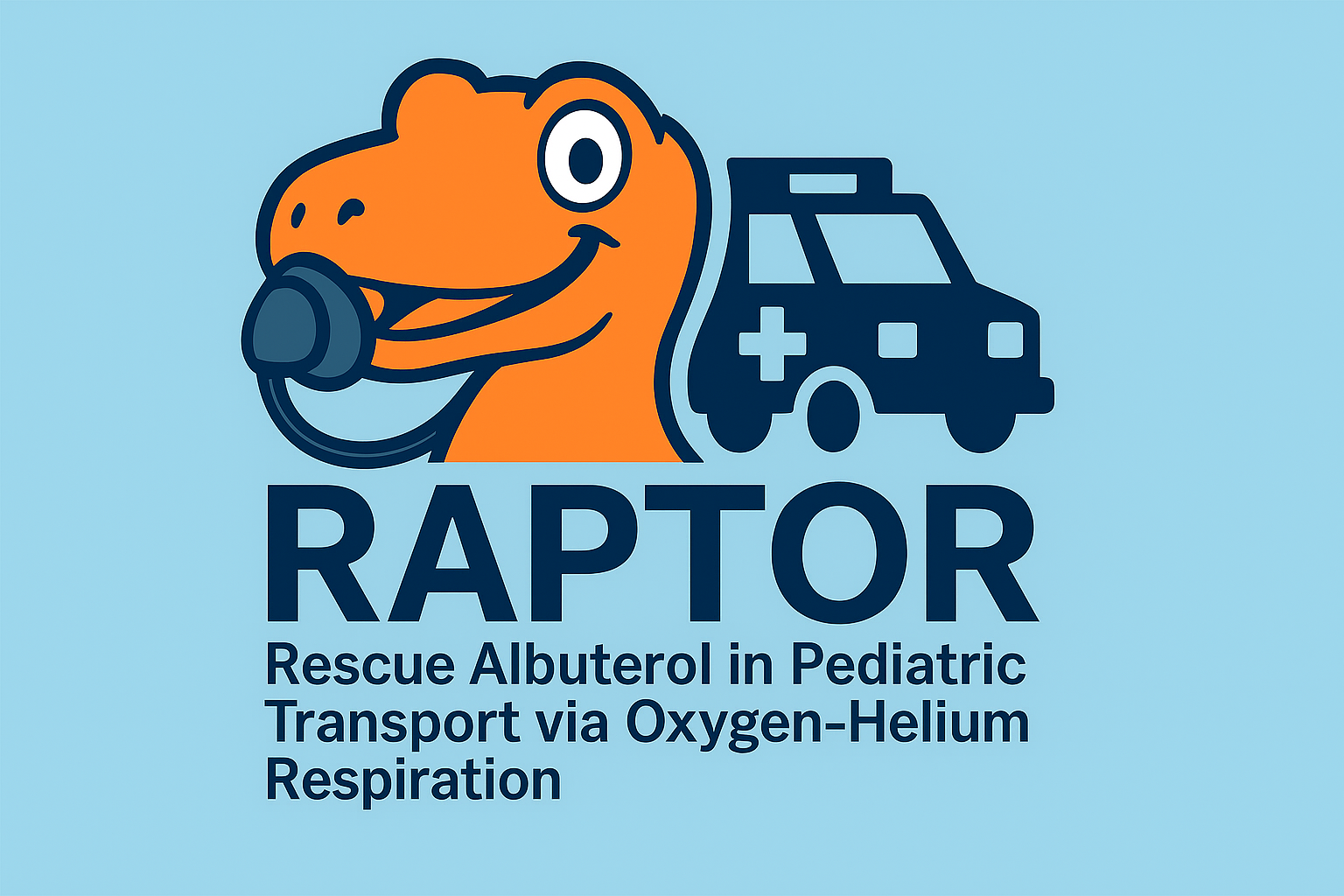
Background
Heliox-driven bronchodilator therapy has been explored for decades in acute paediatric asthma, with early studies showing potential improvements in airflow and symptom scores. However, findings have been inconsistent, and clinical uptake has been limited by logistical challenges and equivocal impact on admission rates or length of stay. Most existing trials focus on ED or inpatient settings, often missing the critical early window for intervention. With modern transport ventilators eliminating the need for separate med-air cylinders, prehospital and interfacility administration of Heliox is now more feasible than ever. Revisiting its utility in this earlier phase of care—particularly during transport—may offer an opportunity to alter the trajectory of respiratory failure before PICU admission becomes inevitable.
Project Aims
To conduct a systematic review and meta-analysis of existing studies comparing Heliox-driven versus oxygen-driven albuterol nebulisation in paediatric patients with acute asthma.
To evaluate the impact of Heliox on clinically relevant outcomes, including PICU admission, ICU and hospital length of stay, and need for intubation.
To assess the methodological quality and heterogeneity of existing literature and identify limitations in study design, timing, and setting of intervention.
To determine whether a critical gap exists in the early use of Heliox—particularly during interfacility or prehospital transport—and establish the rationale for a prospective transport-based pilot study.
Feasiblity
Despite mixed findings in past studies, Heliox remains physiologically promising for the management of severe paediatric asthma. Its historical limitations—primarily logistical, not clinical—are increasingly surmountable. Modern transport ventilators (e.g., Hamilton T-series) entrain ambient air and no longer require dedicated medical air cylinders, freeing up critical tank space for Heliox on transport units. This shift makes it operationally feasible to administer Heliox during interfacility transport for the first time at scale.
Critically, no published studies have evaluated Heliox as an early intervention during transport, despite transport representing a key therapeutic window where escalation might prevent PICU admission. As healthcare systems seek to reduce unnecessary ICU utilisation and length of stay, the potential for Heliox to shift clinical trajectories earlier in the course of care warrants renewed investigation.
Methdology
-
Systematic Review/Meta Analysis– use manuscript as justification for transport specific study
-
Prospective, single-centre quasi-experimental pre/post cohort study
Control group (Pre-intervention): Patients 2-18 with moderate to severe asthma receiving Albuterol via O2/Medical Air blend
Exposure Group (Post-intervention): Patients 2-18 with moderate to severe asthma receiving Albuterol via Heliox 70/30 blend.
Project Timeline
-
PGY-1
Conduct Systematic Review/ Meta Analysis
-
PGY-2
Seek IRB approval for RAPTOR Study
-
PGY-3
Educate Transport Team on inclusion criterio & treatment protocols
Enroll patients
-
PGY-4
Statistical anlaysis & Manuscript write up



